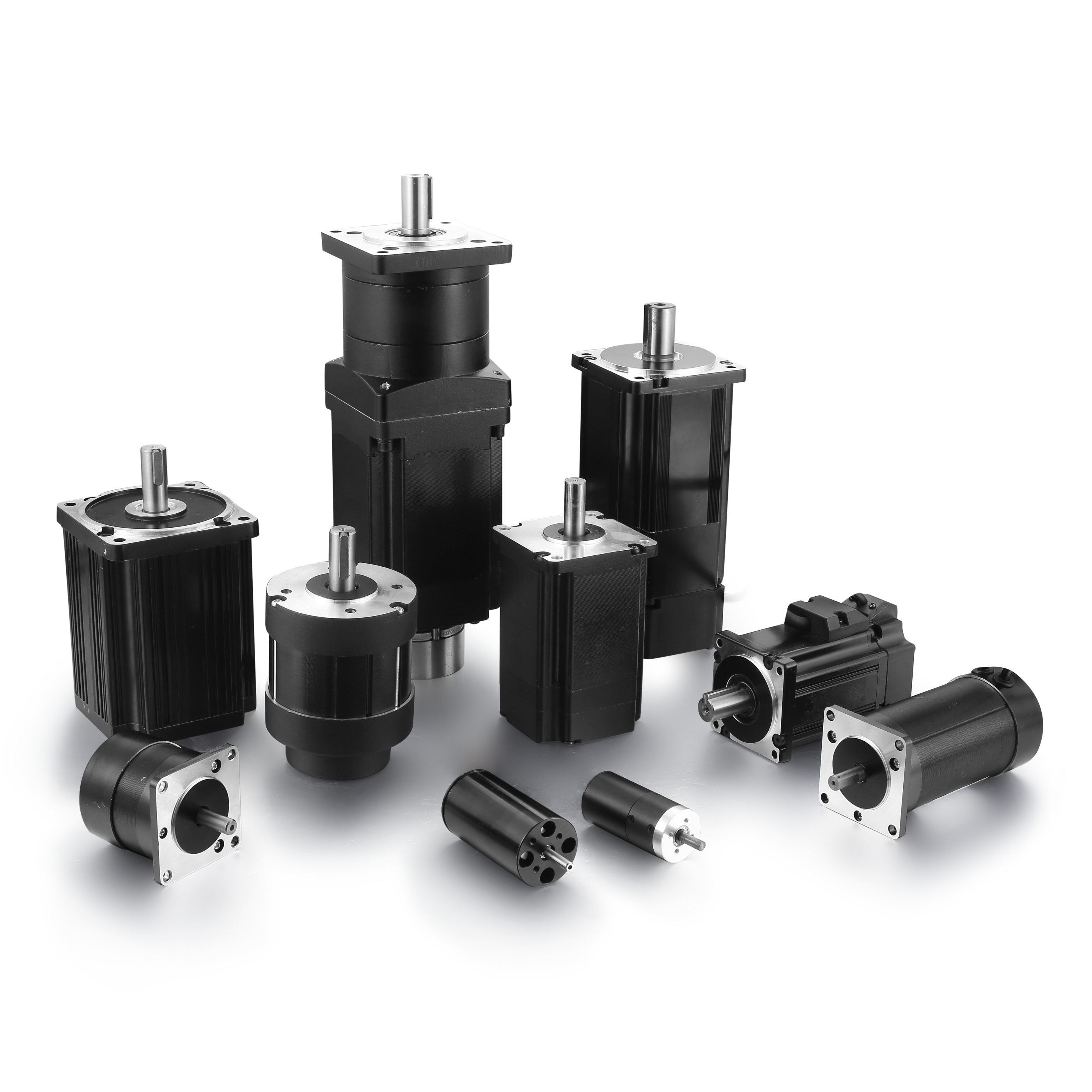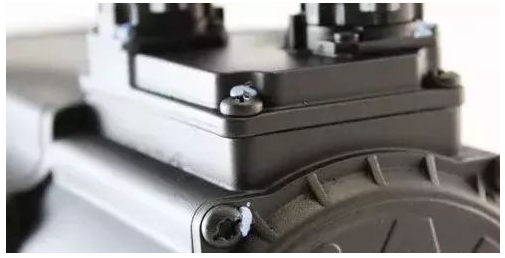The performance of motor energy consumption is mainly in the following aspects
1.First, the motor load rate is low.
Due to the improper selection of the motor, excessive surplus or changes in the production process, the actual working load of the motor is far less than the rated load, and the motor that accounts for about 30% to 40% of the installed capacity runs under the rated load of 30% to 50%. Efficiency is too low.
2.Second, the power supply voltage is asymmetric or the voltage is too low.
Due to the unbalance of the single-phase load of the three-phase four-wire low-voltage power supply system, the three-phase voltage of the motor is asymmetrical, and the motor generates negative sequence torque. Losses in the operation of large motors. In addition, the grid voltage is low for a long time, which makes the motor current in normal operation too large, so the loss increases. The greater the three-phase voltage asymmetry, the lower the voltage, the greater the loss.
3.The third is that the old and old (obsolete) motors are still in use.
These motors use class E insulation, are bulky, have poor starting performance, and are inefficient. Although it has undergone years of renovation, it is still in use in many places.
4.Fourth, poor maintenance management.
Some units do not maintain the motors and equipment as required, and allow them to run for a long time, which makes the loss continue to increase.
Therefore, in view of these energy consumption performance, it is worth studying which energy saving scheme to choose.

There are roughly seven types of motor energy-saving solutions
1. Select energy-saving motor
Compared with ordinary motors, the high-efficiency motor optimizes the overall design, selects high-quality copper windings and silicon steel sheets, reduces various losses, reduces losses by 20%~30%, and improves efficiency by 2%~7%; payback period Usually 1-2 years, some months. In comparison, the high-efficiency motor is 0.413% more efficient than the J02 series motor. Therefore, it is imperative to replace the old electric motors with high-efficiency electric motors.
2. Appropriate selection of motor capacity to achieve energy saving
The state has made the following regulations for the three operating areas of three-phase asynchronous motors: the economic operation area is between 70% and 100% of the load rate; the general operation area is between 40% and 70% of the load rate; the load rate is 40% The following are non-economic operating areas. Improper selection of motor capacity will undoubtedly result in waste of electric energy. Therefore, using a suitable motor to improve the power factor and load rate can reduce power loss and save energy.
3. Use magnetic slot wedge instead of original slot wedge
The magnetic slot wedge mainly reduces the no-load iron loss in the asynchronous motor. The no-load additional iron loss is generated in the stator and rotor iron core by the harmonic magnetic flux caused by the cogging effect in the motor. The high-frequency additional iron loss induced by the stator and rotor in the iron core is called pulse vibration loss. In addition, the teeth of the stator and rotor are sometimes aligned and sometimes misaligned, and the magnetic flux of the tooth cluster on the tooth surface fluctuates, which can induce eddy currents in the tooth surface line layer, resulting in surface loss. Pulse vibration loss and surface loss are collectively called high-frequency additional losses, which account for 70% to 90% of motor stray losses, and the other 10% to 30% are called load additional losses, which are generated by leakage magnetic flux. Although the use of magnetic slot wedges will reduce the starting torque by 10% to 20%, the iron loss of the motor using magnetic slot wedges can be reduced by 60k compared to the motor using ordinary slot wedges, and it is very suitable for no-load or light-load starting motor transformation .

4. Adopt Y/△ automatic conversion device
In order to solve the waste of electric energy when the equipment is lightly loaded, on the premise of not replacing the motor, a Y/△ automatic conversion device can be used to achieve the purpose of saving electricity. Because in the three-phase AC power grid, the voltage obtained by the different connection of the load is different, so the energy absorbed from the power grid is also different.
5. Motor power factor reactive power compensation
Improving power factor and reducing power loss are the main purposes of reactive power compensation. The power factor is equal to the ratio of active power to apparent power. Usually, a low power factor will cause excessive current. For a given load, when the supply voltage is constant, the lower the power factor, the greater the current. Therefore, the power factor is as high as possible to save electric energy.
6. Frequency conversion speed regulation
Most of the loads of fans and pumps are selected according to the demand for full-load work. In practical applications, most of the time is not in a full-load working state. Since it is difficult to adjust the speed of AC motors, windshields, return valves, or start and stop times are often used to adjust the air volume or flow. At the same time, it is difficult for large motors to frequently start and stop under the power frequency state, and the power shock is large, which will inevitably cause power loss and Current impact when switching on and off. It is the most scientific control method to directly control the load of fans and pumps with the frequency converter. When the motor runs at 80% of the rated speed, the energy saving efficiency is close to 40%. At the same time, closed-loop constant pressure control can also be realized, and the energy saving efficiency will be further improved. . Because the frequency converter can realize the soft stop and soft start of large motors, it avoids the voltage shock when starting, reduces the failure rate of the motor, prolongs the service life, and also reduces the capacity requirements and reactive power loss of the power grid.
7. Liquid speed regulation of winding motor
The liquid resistance speed control technology is developed on the basis of the traditional product liquid resistance starter. The purpose of stepless speed regulation is still achieved by changing the distance between the plates to adjust the size of the resistance. This makes it have good starting performance at the same time. It is powered on for a long time, which brings about the problem of heating and heating. Due to the unique structure and reasonable heat exchange system, its working temperature is limited to a reasonable temperature. The liquid resistance speed regulation technology for winding motors has been rapidly popularized due to its advantages of reliable operation, convenient installation, large energy saving, easy maintenance and low investment. For some speed regulation accuracy, the requirements for speed regulation are not high and the speed regulation range is not wide. , and infrequent speed regulation of wound motors, such as large and medium wound asynchronous motors of fans, pumps and other equipment, the use of liquid speed regulation effect is remarkable.
 BACK
BACK
Yesterday, the 138th China Import and Export Fair (Canton Fair) was grandly open…
In the golden autumn of October, the fruits are fragrant. On this beautiful mome…
Dear friends, the 138th Canton Fair will be held in Pazhou, Guangzhou on October…
At BG Motor, we firmly believe that the strength of a team can carry dreams furt…
New Breakthrough at Conifer (Silicon Valley Startup)What’s new?Conifer has devel…
The 2025 World Robot Conference (WRC), held in Beijing, brought together top min…